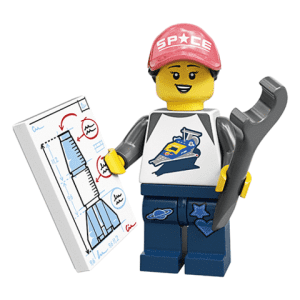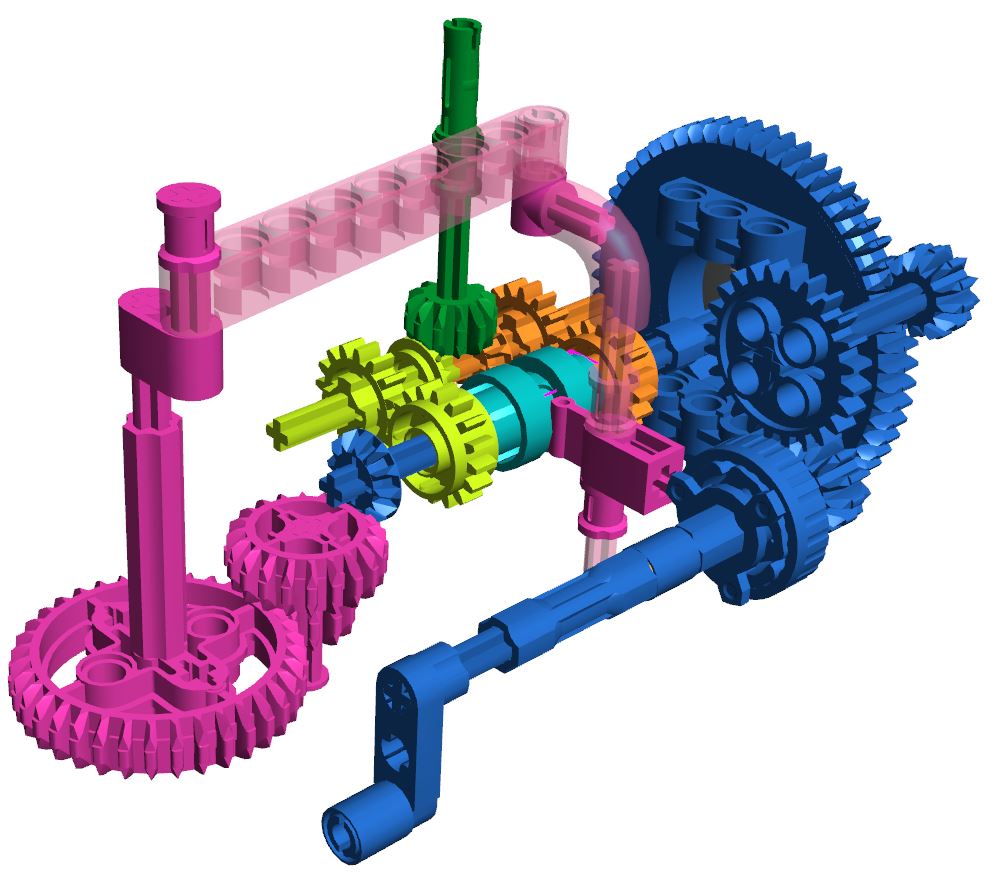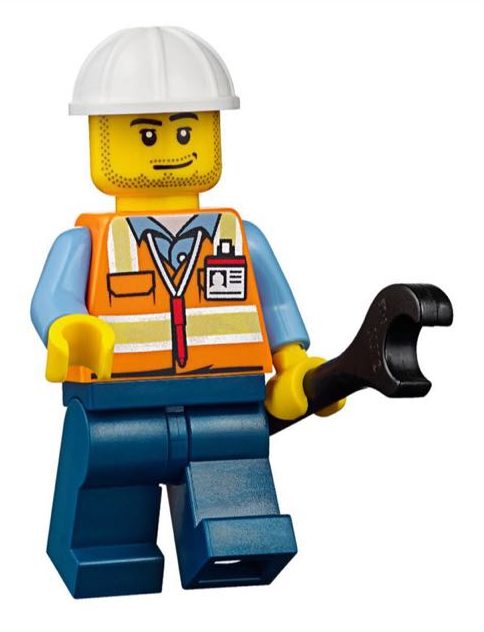
Throughout our articles and products on our website we often use some terminology to describe and explain a certain mechanism or idea. To get everyone on the same page we have made a list with the most common used abbreviations and terms used in LEGO and engineering world.
- Alternate model: Also called C-model, is a model that is built using only parts of an official LEGO set.
- Anti-stud: This is generally the bottom of the brick. Sometimes also called female stud.
- Axle: A central shaft for a rotating wheel or gear, allowing them to rotate freely. It’s also used to connect appropriate parts together and prevent the model from falling apart. They come in lengths varying from 2 to 32 studs. To make them easy to distinguish they are color coded. However some LEGO sets use different colors to match the color scheme.
- Beam: A structural element that primarily resists loads and deflection by bending. Often used in levers and mechanisms.
- Bevel gear: Gear where the axes of the two shafts intersect and the tooth-bearing faces of the gears themselves are conically shaped. Bevel gears are most often mounted on shafts that are 90 degrees apart, but can be designed to work at other angles as well. The pitch surface of bevel gears is a cone.
- BOM: Abbreviation for Bill Of Material, also called part list.
- Bushing: A cross holed part which can attach over a LEGO Technic axle. You can use it to distance parts apart on an axle or as an end stop on an axle. There is a 0.5L and 1L version available in various colors.
- Cam: Often a strangely shaped part which rotates or slides in a mechanical linkage. A cam follower is often attached at the end of a lever, This follows the outline of the cam which in that way transforms a rotary motion into a linear motion.
- Center stop: A smooth area in the middle of a LEGO Technic axle which prevents cross holed parts from sliding over it (e.g. gears, bushes and beams). smooth area is about 1.05L long which gives spacing when pressing parts tight on it. The only 2 axles with this feature are the 4L tan and 5.5L dark gray axle. By using these axles in the correct place you can prevent unwanted friction in your mechanism. See also End Stop.
- Chain: A serial assembly of connected pieces, called links, which is flexible and curved in compression but linear, rigid, and load-bearing in tension. A chain may consist of two or more links. We use them most often for transferring power throughout our machines.
- Clutch: A mechanical device that engages and disengages power transmission between two axles. LEGO Technic offers a blue and a red gear to interlock with the clutch. Often used to create complex (automated) gearboxes or mechanisms to switch rotation direction or to gear up/down motion.
- C Model: Also called alternate model, is a model that is built using only parts of an official LEGO set.
- Drive shaft: A component for transmitting mechanical power, torque and rotation, usually used to connect other components of a drivetrain that cannot be connected directly because of distance or the need to allow for relative movement between them. Axles are often used in a drive shaft.
- End stop: A thicker area at the end of a LEGO Technic axle which prevents an axle from sliding out via one end of the hole. This can be used to build sturdy or very compact mechanisms as you don’t need a bushing on both ends of the axle. The 3L, 4L, 5L, 6L and 8L axle in various colors have a version available with end stop. See also Center Stop.
- Force: An influence that, without resistance, will change the motion of an object. Force can also be described intuitively as a push or a pull. A force can cause an object with mass to change its velocity and has both magnitude (“power”) and direction. There are multiple types of forces like friction, gravity, tension force, spring force, electro and magnetic forces. Isaac Newton wrote laws about this which are still being used in physics today.
“May the Force be with you” while building ;) - Friction: The force resisting the relative motion of solid surfaces, fluid layers, and material elements sliding against each other. Friction is the enemy of every good working GBC, however, sometimes mechanisms use friction in their advantage like slip clutch mechanisms. While building make sure that all moving parts can move freely.
- GBC: Abbreviation for Great Ball Contraption. Mechanical machines to move GBC Balls around. Learn more.
- Gear: A rotating circular part with cut teeth on the outer circle. The cut teeth allow a gear to mesh with another gear to transmit torque. Gears of different sizes can change the speed, torque, and direction of a power source. Normally the teeth on the two meshing gears should have the same shape. However with LEGO more combinations are possible. See also Gear ratio and Gearbox.

- Gearbox: A system of gears in an engine, vehicle or machine with the purpose to increase or reduce speed and/or change direction. As a result, torque output will be the inverse of the speed. For example if you have a speed reducer (speed output is less than speed input), the torque output will increase and vice versa.
- Gear ratio: The ratio of the driving and driven gear. The gear ratio is calculated by dividing the number of teeth of the driving gear by the number of teeth of the driven gear (i= Ze/ Zs). To get a specific gear ratio in the LEGO world you can use a LEGO Gear Calculator.
- Gear train: A mechanical system formed by mounting gears on a frame to transfer power.
- Geometry: One of the oldest branches of mathematics. It is concerned with properties of space that are related with distance, shape, size, and relative position of figures. All mechanisms deal with geometry.
- Illegal: LEGO building techniques that break the “rules” for connections between LEGO elements followed by official LEGO set designers (and us). Particularly connections that stress the LEGO elements. (e.g. inserting a plate upright between the studs on a brick or making stressed triangles with LEGO Technic beams)
- Joints: The connection made between beams / links in e.g. a mechanism.
- Knolling: The process of arranging a series of elements next to each other in an aesthetically pleasing manner, without the pieces being connected. The parts are often arranged in rows by color, size, shape, or all three. Knolling is often done as a sorting method prior to building a set, or as a way of displaying the inventory of a set or model.
- Legal: LEGO building techniques that follow building guidelines for official LEGO set designers (which we also follow).
- Lever: A beam capable of rotating on a point on itself used to get a mechanical advantage. A lever amplifies an input force to provide a greater output force, which is said to provide leverage. The ratio of the output force to the input force is the mechanical advantage of the lever, trading off force against movement. The formula for mechanical advantage of a lever is Load / Effort.

- Linkage: An assembly of beams connected to manage forces and movement. The movement of a beam (also called links) is studied using geometry. The connections between links are called joints. For prototyping and better understanding you can use a Linkage Simulator.
- Mechanism: A device that transforms input forces and movement into a desired set of output forces and movement. Mechanisms generally consist of moving components which may include gears, belts, chains, cams, linkages, brakes and clutches.
- Mindstorms: LEGO computer which allows older children to create robots with Technic and System parts, and code them using a desktop software. It has an intelligent brick that can be programmed. Mindstorms has a color sensor, a distance sensor, a touch sensor, an infrared sensor, and a remote infrared beacon.
- NPU: Abbreviation for Nice Part Use. An unexpected way to use a LEGO element in a model. We do our best to push the parts to their limit in creative ways.
- Planetary gear: A gear combination which provides a high gear reduction in a compact package. Also called epicyclic gear train. LEGO has not yet produced such gear but you could make your own using the available gears.
- PF/PF: LEGO Power Functions connector where top and bottom of the power connector is interfaced to the LEGO Power Functions System.
- 9V/PF: LEGO Power Functions connector where the top of the power connector is interfaced to the LEGO Power Functions System. The bottom is interfaced to the older LEGO 9V Electric System.
- PU: Abbreviation for Powered Up.
- Powered Up: A series of battery packs, electric motors (with encoders), sensors and controllers to power LEGO sets and creations. A single cable consists of 6 wires which enables them to transfer more data, allowing them to be smart. The system is often controlled and programmed via a smart Bluetooth device (e.g. your smartphone) but can also be controlled via a handheld controller. Learn more.
- Power Functions: A series of battery packs, electric motors, sensors and wireless controllers to automate LEGO sets and creations. A single cable consists of 4 wires. There are 2 types of connecter for this system: PF/PF and 9V/PF. Learn more.
- Pressure: The force applied perpendicular to the surface of an object per unit area over which that force is distributed. Within LEGO we often talk about air or spring pressure. E.g. when using the LEGO Pneumatic system we take the air pressure into account.
- Spare parts: Extra parts which are included in every LEGO set. Often these include easy to loose parts such as small pins and bricks. These extra parts are not listed in the part list of the LEGO set (end of the building instructions) and may vary between LEGO sets. For that reason we will never use spare parts in our models.
- STEAM / STEM: An approach to learning that uses Science, Technology, Engineering, the Arts and Mathematics as access points for guiding student inquiry, dialogue, and critical thinking. Learn more.
- Stud: The circular bumps that are on almost every classic LEGO piece. They fit inside the anti-studs below another piece and form the interlocking system of LEGO. They are often used for measuring LEGO parts and models. A LEGO Technic hole also uses the same stud grid. 1 stud is roughly 8mm | 0.31 Inch. See also this LEGO Unit Converter.
- Technic: A LEGO system introduced in 1977. Technic sets use parts like gears, axles and connectors to create more mechanical, complex and/or more sturdy models.
- Torque: The rotational equivalent of linear force. Just as a linear force is a push or a pull, a torque can be thought of as a twist to an object around a specific axis. It is also referred to as the moment or rotational force. Motors are often specified with the amount of torque they can deliver.
- Universal joint: A joint or coupling connecting rigid rods whose axes are inclined to each other, and is commonly used in shafts that transmit rotary motion. It consists of a pair of hinges located close together, oriented at 90° to each other, connected by a cross shaft.
- WIP: Abbreviation for Work In Progress.
Missing a term or abbreviation? Let us know and we will update the list.
